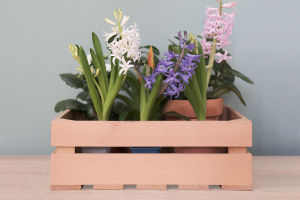Foraging for wild mushrooms is a time-honored tradition cherished by enthusiasts around the world.
The thrill of exploring the wilderness and discovering nature's bounty is undeniably alluring.
However, hidden beneath the forest canopy lies a perilous reality: the risk of accidental poisoning from misidentified mushrooms. Let's delve into the dangers posed by wild mushrooms and provide essential tips for safe foraging practices.
Understanding the Risks
One of the greatest challenges of wild mushroom foraging is the striking similarity between edible and poisonous varieties. To the untrained eye, toxic mushrooms often mimic their harmless counterparts, making visual identification alone unreliable. Factors such as shape, smell, and color may provide clues, but they are not foolproof indicators of a mushroom's toxicity. Consequently, consuming misidentified mushrooms can lead to severe poisoning, with symptoms ranging from gastrointestinal distress to organ failure.
Compounding this risk is the ubiquitous presence of toxic mushrooms in natural ecosystems. Poisonous species frequently grow alongside edible ones, and contamination can occur easily. Moreover, some ostensibly benign mushrooms can become toxic when grown on certain plants or substrates. As a result, even experienced foragers are not immune to the dangers lurking in the wild.
Mitigating the Risks
Given the inherent hazards of wild mushroom foraging, it is essential to adopt precautionary measures to minimize the risk of poisoning. Here are some key guidelines to follow:
1. Education and Awareness
Acquire comprehensive knowledge of mushroom identification through reputable sources, books, or workshops. Familiarize yourself with the distinguishing features of both edible and toxic species.
2. Exercise Caution
When in doubt, err on the side of caution. Avoid consuming mushrooms unless you are absolutely certain of their identity. Remember, it is better to go hungry than to risk poisoning.
3. Safe Foraging Practices
Choose well-established foraging areas away from pollution sources such as roadsides or industrial sites. Be mindful of environmental factors such as weather conditions and habitat types, as they can influence mushroom growth and distribution.
4. Inspect Thoroughly
Carefully examine each mushroom you harvest, paying close attention to its physical characteristics. Use a field guide or smartphone app to aid in identification if necessary.
5. Consult Experts
If uncertain about a mushroom's identity, seek guidance from experienced foragers or mycologists. Never rely solely on online forums or anecdotal advice for identification purposes.
6. Gradual Introduction
When trying a new species for the first time, consume a small portion and wait for several hours to observe any adverse reactions before consuming more.
7. Record Keeping
Maintain a foraging journal to document your findings, including the location, date, and species encountered. This information can be invaluable for future reference and research.
The Importance of Responsible Foraging
In addition to safeguarding personal health, responsible foraging practices play a crucial role in preserving fragile ecosystems and biodiversity. Overharvesting of wild mushrooms can disrupt delicate ecological balances and threaten the survival of certain species. Therefore, foragers must adhere to ethical principles such as:
1. Sustainable Harvesting
Only collect mushrooms in quantities that allow populations to regenerate naturally. Avoid harvesting rare or endangered species altogether.
2. Leave No Trace
Minimize your impact on the environment by practicing Leave No Trace principles. Refrain from trampling vegetation or disturbing wildlife habitats while foraging.
3. Respect Private Property
Obtain permission from landowners before foraging on private land, and adhere to any regulations or restrictions in public parks or protected areas.
By embracing these principles, foragers can enjoy the bounty of nature while contributing to its long-term preservation.
Wild mushroom foraging is a rewarding pursuit that offers a direct connection to the natural world. However, it is not without its hazards. By educating oneself, exercising caution, and practicing responsible foraging, enthusiasts can mitigate the risks associated with wild mushroom consumption. Remember, the joy of discovery is best enjoyed when accompanied by knowledge and prudence. So venture forth into the forest, but tread carefully, and let the wonders of the fungal kingdom enrich your life in ways both savory and safe.


